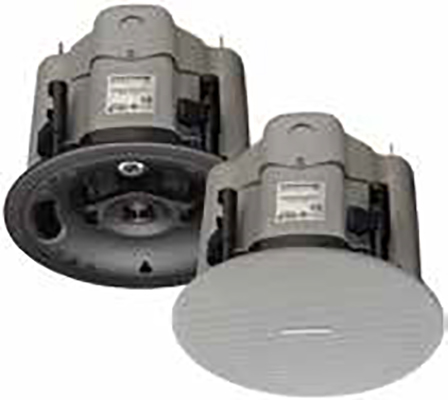3 Tips for Better Speech Intelligibility

Best practices & tips for maximizing intelligibility.
The Revolabs FLX UC 500 system Workers are less productive when their meetings are peppered with “Can you repeat that?” Ditto for students, who don’t learn as well when they strain to hear classmates and the instructor.
But when an audio system maximizes speech intelligibility in a room, everyone benefits. For example, in classrooms, intelligibility facilitates what’s called “secondary learning.”
“This happens when students can clearly hear the question another student asks and the teacher’s response,” said Patrick Herlihy, Media Vision USA sales director. “Even if they already know the answer, it reinforces their belief by having it repeated.”
To maximize speech intelligibility, consider the following three tips.
Beware of overkill
Skimping often comes back to haunt, such as buying cheap transducers or having too few mics in a room. “Pick good stuff,” said Justin O’Connor, Biamp Systems audio product manager. “A $5 ceiling speaker sounds like a $5 ceiling speaker.”
A daily selection of features, industry news, and analysis for tech managers. Sign up below.
But overspending can cause problems, too. “In vast majority of applications, the audio system is set to complete overkill mode,” said Yuval Kramer, Kramer Electronics audio line manager.
Imagine a 200-square-foot boardroom that has four 30W ceiling speakers powered by a 100W amp—a common setup—and a noise floor of 50 dB. One rule of thumb is that the average audio level should exceed the noise floor by 6 dB to maximize speech intelligibility. So this boardroom would need 55 to 60 dB at ear level to ensure good speech intelligibility.
“Each of these speakers in [this] example above will give 88dB in 1W,” Kramer said. “This will be way louder than actually needed. Even adding the height of the ceiling and dispersion angles, 1W per speaker will be more than enough.
“How many of you have seen a 4W power amplifier in a boardroom? The goal should be to sell the most efficient audio system and not the most expensive one.”
Go ahead & Zone out

The Executive Elite line from Revolabs Intelligibility can suffer when all of a room’s speakers are on a single channel, which creates one, giant zone. Instead, consider a mix-minus configuration, which uses multiple zones. That allows the system to make adjustments based on who is using the mic at a given moment.
For example, in a classroom, the system would detect that a student in a particular location has stated speaking and then zone out her voice from the speaker just above her. At the same time, it increases the volume of the speaker farthest from her. The result is that she gets the mix of the audio in the room minus herself, maximizing intelligibility and minimizing feedback.
“When a system is used for local sound reinforcement and has a lot of open mics, like a large boardroom or a classroom, using a mix-minus system is a great way to go,” said O’Connor, whose company has a primer at http://support.biamp.com/Audia-Nexia/ Programming/Automixer_basics. “It doesn’t take a whole lot more work when you’re using a good DSP system.”
Go hi-fi
Classrooms and boardrooms rarely are monoculture these days. To make it easier for everyone to accommodate everyone else’s accents, choose an audio codec with a wide fidelity range.
How wide? Although 20 kHz codecs are available, that much might be overkill unless participants frequently use languages heavy on strong consonants, such as German. “Anywhere in that 14 to 16 kHz range is, from a speech perspective, all you’re going to need,” said Tim Root, Revolabs CTO and executive vice president of new business development.
Wideband codecs are even more valuable for rooms where the participants frequently are remote. “For any kind of remote communication experience, the driver for intelligibility is the fidelity range,” Root said.
The In Crowd

Crestron’s new in-ceiling Saros Express speakers
The Saros 4-inch ICE4T, Saros 6.5-inch ICE 6T, and Saros 8-inch ICE8T were designed for applications that require speech reinforcement and background music reproduction at low to moderate volume levels, such as in classrooms, corporate meeting spaces, retail shops, and transportation hubs.
70/100 volt tap positions enable you to dial in the correct volume level for each speaker, tile bridge hardware provides support in drop ceilings, and dual conduit connection points and detachable terminal blocks with parallel pass-thru support common wiring topologies for distributed speaker installations.
Taking cues from the luxury home market, all Saros in-ceiling speakers employ magnetically adhered bezel-free grilles so they “disappear” into the most sophisticated interior spaces. For added flexibility all models are available in both black and white.
